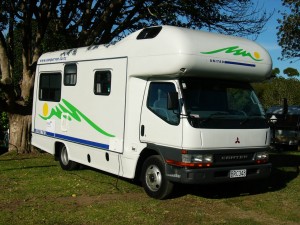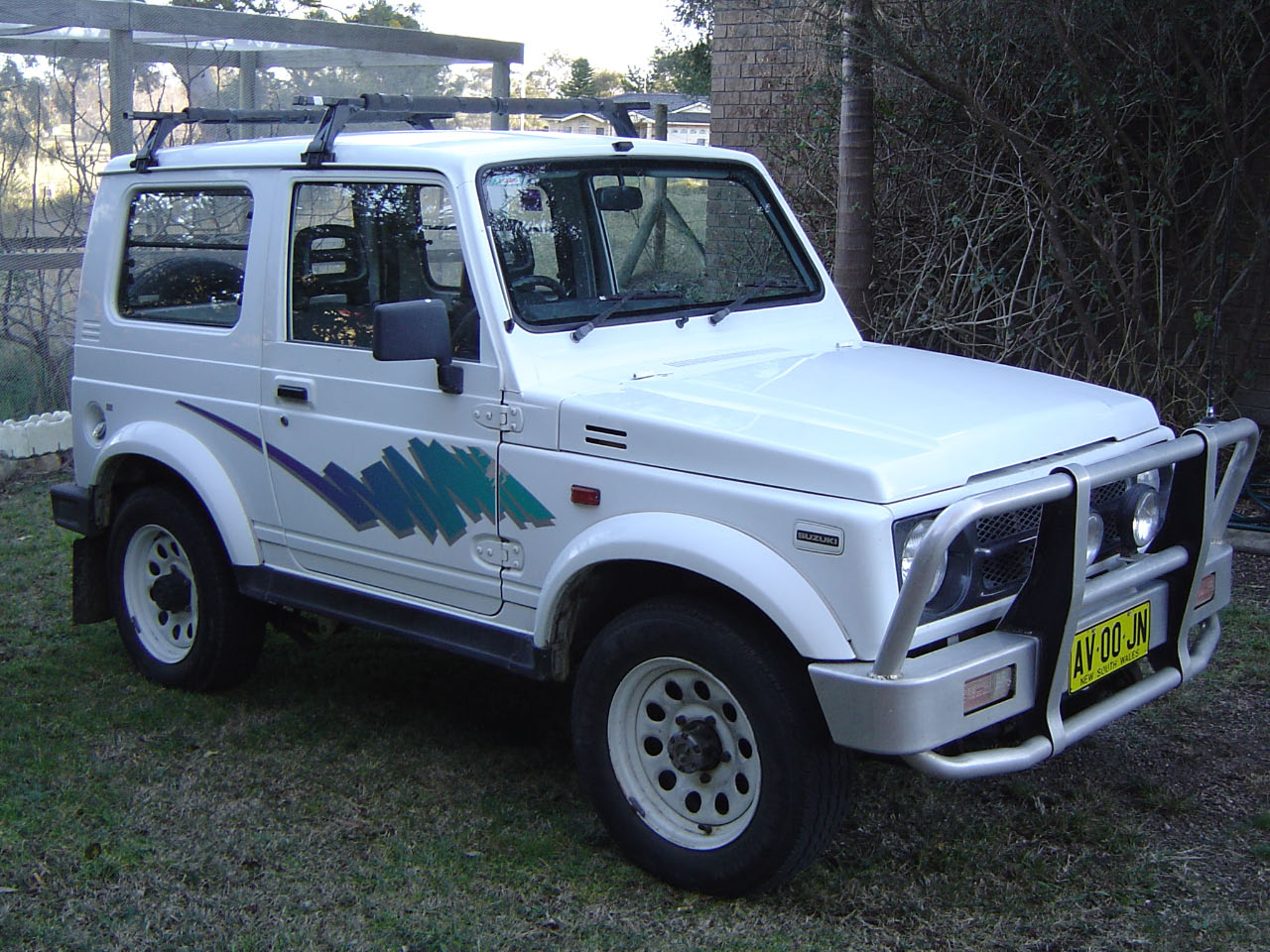What vehicles to go with?
We looked at Motorhomes and quickly ruled them out – not affordable in the size we wanted and a pain as you have no vehicle to easily get around with once you arrive at a destination. We learnt that when we, along with Rodney, travelled the north island of NZ in one in Jan 2004.

The vehicle we hired in NZ - it was brand new, we were the 1st users.

Rear of the mobile home/campervan - with the promise of a magnificent sunset.

Rodney taking in sunset at Whangarei, NZ
Next to be reviewed was a fifth wheeler which I liked very much. What eventually turned me away from them was the fact much of the load area of the tow vehicle needs to be left clear for the hitch. So we started to research big caravans.
This decision was fairly easy from this point. The 1998 Hino FD truck we already owned seemed a logical tow vehicle. It has plenty of grunt (205hp) and is pretty good on fuel – 13.5 miles per gallon, or 4.4km per litre for you Gen X and Y types. It has a 20ft pantech body where lots of goodies could be carried. It is pretty comfortable to travel in, helped by its rear airbag suspension. You get to see a lot more from being perched a bit higher than in a car or 4wd. It is already set up for long distance travel. The truck now has just under 200,000km on the clock and should be good for 500-600K before any major motor work will be called for. We bought it new and I have been the only driver. Hence the truck was chosen as our tow vehicle.

Our tow vehicle before it gets a tidy up

The back end of the Truck, before I took to the signwriting with a sander. Oh, and a 4WD like the one in the foreground could be handy when traveling around Oz.
What Caravan?
As the caravan is to be our home for the foreseeable future we both decided it needed to be large. By todays standards, large is anything over 20ft long. Of the several hundred Australian manufacturers, only a handful make caravans bigger than 23ft. A lot of manufacturers are located in the vicinity of the Ford Factory at Campbellfield, a northern suburb of Melbourne. Co-incidently, that area is where I was picking up a lot of the furniture for our last business venture.
After extensive internet searching, talking to caravan and mobile home owners and roaming around three different Caravan and Camping Shows, I shortlisted four manufacturers and then visited their factories. From there the decision was easy. Quality, attention to detail and value for money were the main points that lead us to choose an Aussie Wide Omaroo caravan. We paid a deposit in December 2007. That gave us a place in their production program.
Most makers currently quote 4 – 8 months to produce your order. Until we finalised our business and got the house sold we were not game to place a firm order. We closed the furniture shop for good on June 22, 2008 and handed the keys back to the landlord a few days later, bringing to an end our 16 years of continuous retail business in Moruya.
We first listed the house for sale in October 2007. After lots of lookers, but not one offer, a change of agent in March 2008 produced the result we wanted within a month. The house sale settled on July 1, 2008. We headed to Melbourne the very next day to finalise our caravan layout, chose the materials, colours, options, etc. The deal was completed and ‘our’ Omaroo should be ready mid to late September 2008. We added a few options to suit our intended usage.

Swap the 4WD for our truck and you'll get the idea of our setup.
This link will take you to the manufacturers web site: http://www.aussiewidecaravans.com.au/?pg=omaroo
So our van will be an Omaroo tri-axle, 25ft x 7ft 9in internal, with all their standard inclusions plus full QS bed (lots of vans claim to have QS beds but they are short of the mark – false advertising ? ), shower, separate toilet, batteries with solar panels, washing machine, satellite TV, reversing cameras (2), 220litre 3way 2dr fridge, split system aircon, etc. A Honda EU20i generator sealed the deal.










